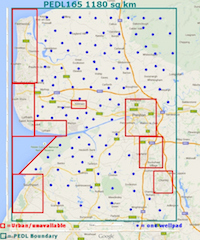So shale gas is a damp squib
 It was all going so well for the frackers. Report after report told us that UK shale gas was going to provide security of supply, cheaper gas, and oodles upon oodles of jobs.
It was all going so well for the frackers. Report after report told us that UK shale gas was going to provide security of supply, cheaper gas, and oodles upon oodles of jobs.
Doubters were caricatured as unpatriotic, Putin funded, fools who could not see the fossil fuel El Dorado that our government was predicting, nor understand the key role that fracked gas was going to play as a bridge fuel.
But then it seemed somebody seems to have told the government some things that it found distinctly unpalatable, and which it has (not totally successfully) tried to bury at the same time as continuing its dash to foist shale gas developments onto unwilling communities.
A report (discovered by FoI by Greenpeace) seems to have been published in 2016 which told the government that far from expecting 4,000 wells to have been drilled and fracked by 2032, it was likely that by 2025 we will only have seen 155 drilled, leaving an incredible 550 wells in each remaining year to be drilled to reach that target.
And what does that 155 well forecast actually mean? Using the Estimated Ultimate Recovery rates from the IoD report (3.2 bcf a well) we get a total extracted (over the 20 – 30 year life of the well of about 930 bcf). If we allow 20 years that’s just 47 bcf a year of production from wells drilled up to 2025.
In the last 4 quarters reported in the Government DUKES report the UK has used 2,900 bcf of gas, so the average annual production expected from those 155 wells is about 1.6% of UK demand. Even if we used Cuadrilla’s highly optimistic forecasts of 6 bfc a well that only makes a drop look like a drip – maybe 3% of UK annual demand?
You would have to be truly desperate to pretend that that will have any significant impact on anything.
It seems that UK fracking really is turning out to be the epitome of a damp squib – a firework that fails to go off – but like any unexploded firework it is still dangerous, which is why we have written to Mark Menzies MP asking him to insist that the government makes this report public. We need to be in possession of the full facts as we face governmental interference in the democratic process, and their attempts to force a failed agenda onto local communities.
It has also been interesting to see how the industry and its supporters have reacted to this news. The Greenpeace article states that:
Cuadrilla, the UK’s largest fracking firm, which produced its own modelling in 2012 that showed many more wells than the government now expects, said the discrepancy could be down to “technical drilling advancements” that “allow operators to access rich gas zones from just one well without the need for multiple vertical wells.”
However in 2012 Cuadrilla Resources were fully aware of these developments as we can see from their evidence submitted to the Energy and Climate Change Committee in October 2012, where they seemed to be suggesting that they has already mastered these “technical drilling advancements”
“In the case of onshore shale development, on-going drilling of new wells does not mean populating the countryside with ever-increasing drilling locations. Horizontal wells can radiate from the same well bore like the tines of a fork, and radially in several directions.”
So given that we know that can’t be the real reason for the discrepancy perhaps Cuadrilla would like to have another go at explaining the discrepancy?
Meanwhile, serial pro-fracking commentator Michael Baker (AKA Yetypu) had this to say on the Daily Telegraph article comments:

Perhaps he hadn’t quite worked out that if the IoD’s forecast for the number of wells was “pie in the sky“, that means that the derived forecasts for investment and employment which depended on that level of activity were logically also “pie in the sky“. Oops!





























